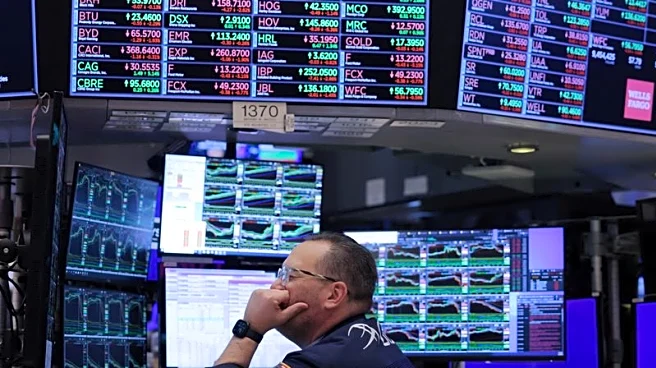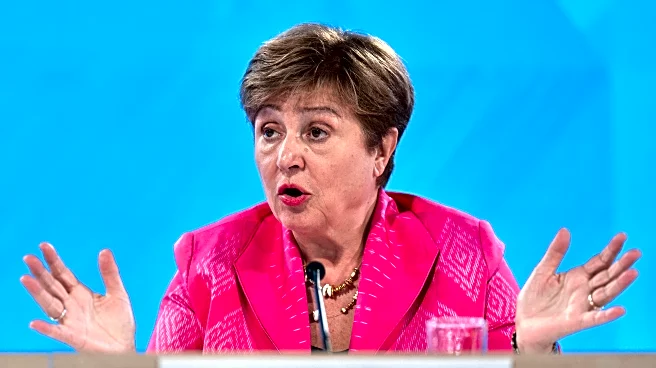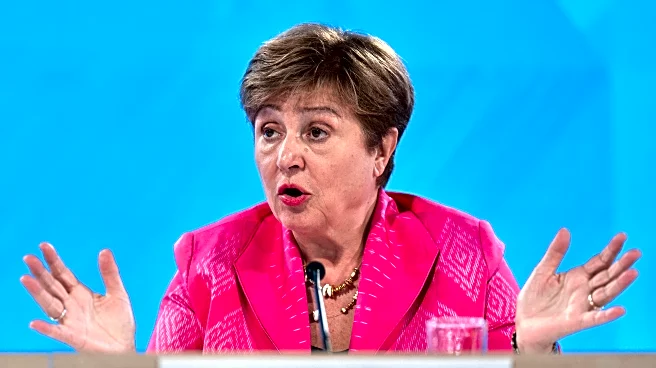What's Happening?
HSBC has revised its average gold price forecasts for 2025 and 2026, citing increased safe-haven demand due to geopolitical tensions, economic uncertainty, and a weakening US dollar. The bank raised its 2025 forecast from
$3,215 to $3,355 per ounce and its 2026 forecast from $3,125 to $3,950 per ounce. Gold has seen a significant rise, hitting a record high of $4,250.89, driven by mounting fiscal deficits in the US and other major economies. HSBC notes that central bank demand remains high, influenced by geopolitical risks and dollar diversification, although it is below peak levels seen in 2022-23. The bank also highlights potential impacts from fewer rate cuts by the US Federal Reserve and gradual declines in global inflation, which may affect gold's rally and jewelry purchases.
Why It's Important?
The adjustment in gold price forecasts by HSBC reflects broader economic and geopolitical dynamics that could impact various stakeholders. Investors and financial markets may see gold as a more attractive asset, given its role as a store of value during instability. This could lead to increased investment in gold, affecting commodity markets and influencing global trade dynamics. Additionally, central banks' continued demand for gold as a diversification tool underscores its strategic importance in monetary policy. The potential tempering of gold's rally due to fewer rate cuts by the Federal Reserve could influence interest rates and inflation expectations, impacting economic growth and consumer spending.
What's Next?
Investors are closely watching the US Federal Reserve's upcoming decisions, with expectations of a 25-basis-point rate cut at this month's meeting and another in December. These decisions could significantly influence gold prices and broader economic conditions. Additionally, geopolitical developments, particularly between the US and China, may further affect market sentiment and demand for gold. Stakeholders, including central banks and institutional investors, will likely continue to monitor these factors to adjust their strategies accordingly.
Beyond the Headlines
The rising gold prices and HSBC's forecast adjustments highlight the ongoing challenges in global economic stability and geopolitical relations. The demand for gold as a safe-haven asset reflects broader concerns about fiscal deficits and currency stability. This situation may prompt discussions on the sustainability of current economic policies and the need for strategic diversification in asset management. Furthermore, the interplay between geopolitical tensions and economic policy decisions could have long-term implications for international trade and financial markets.













